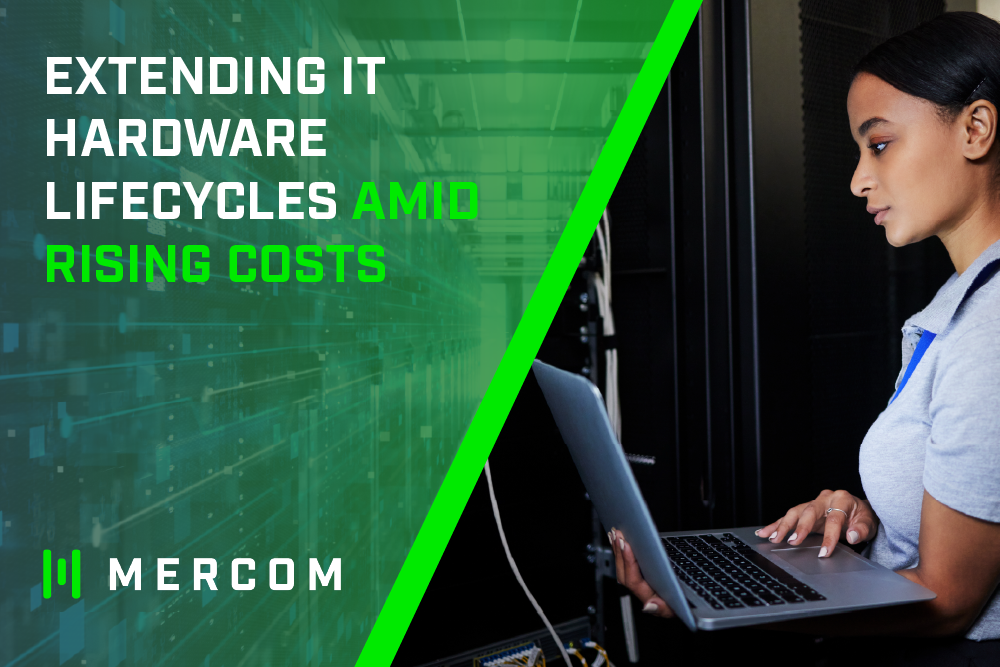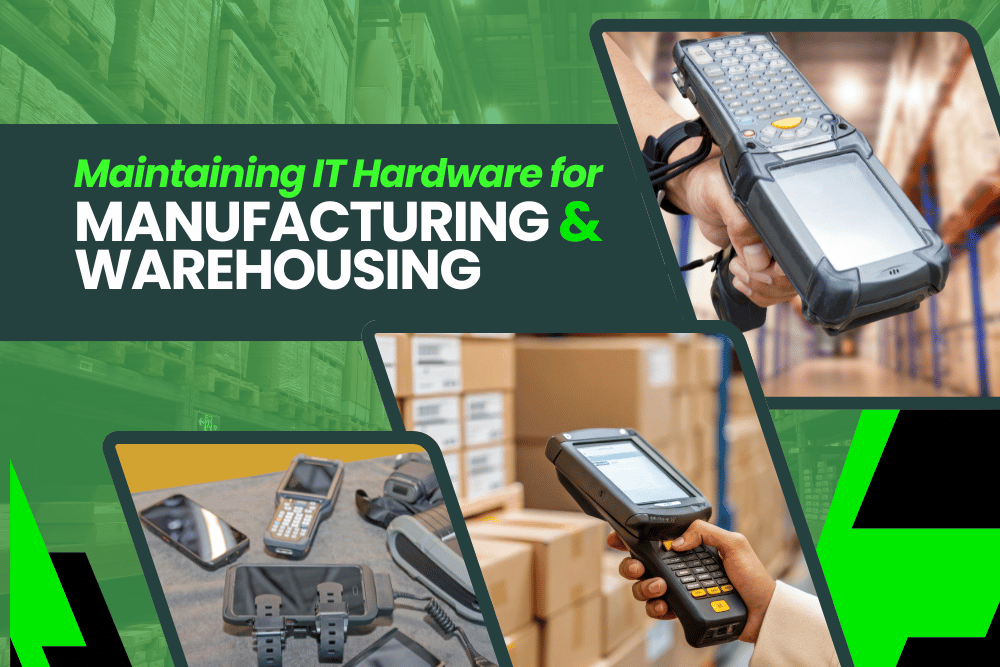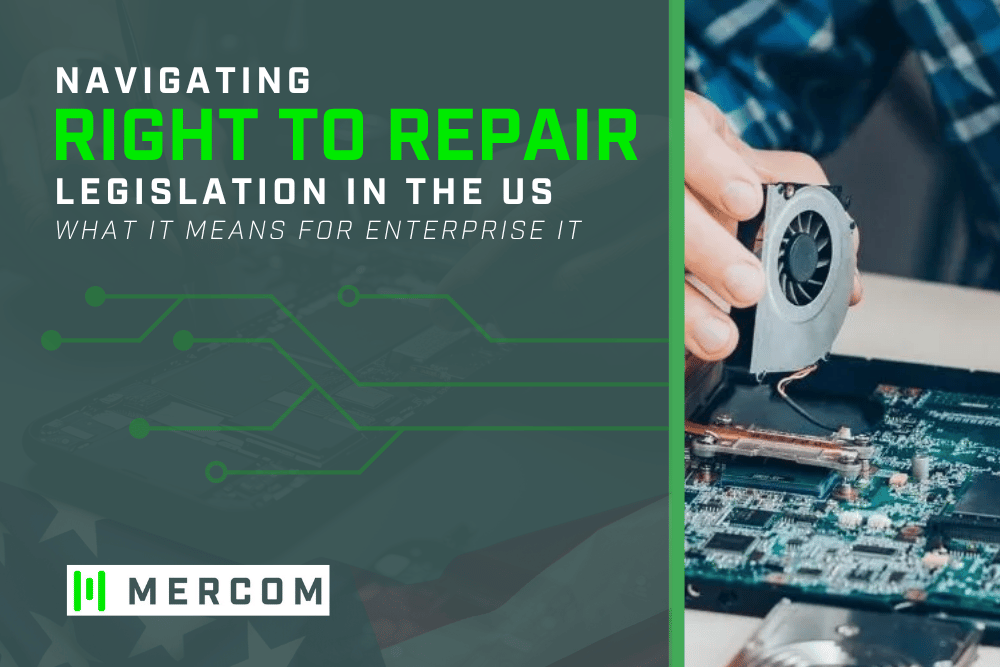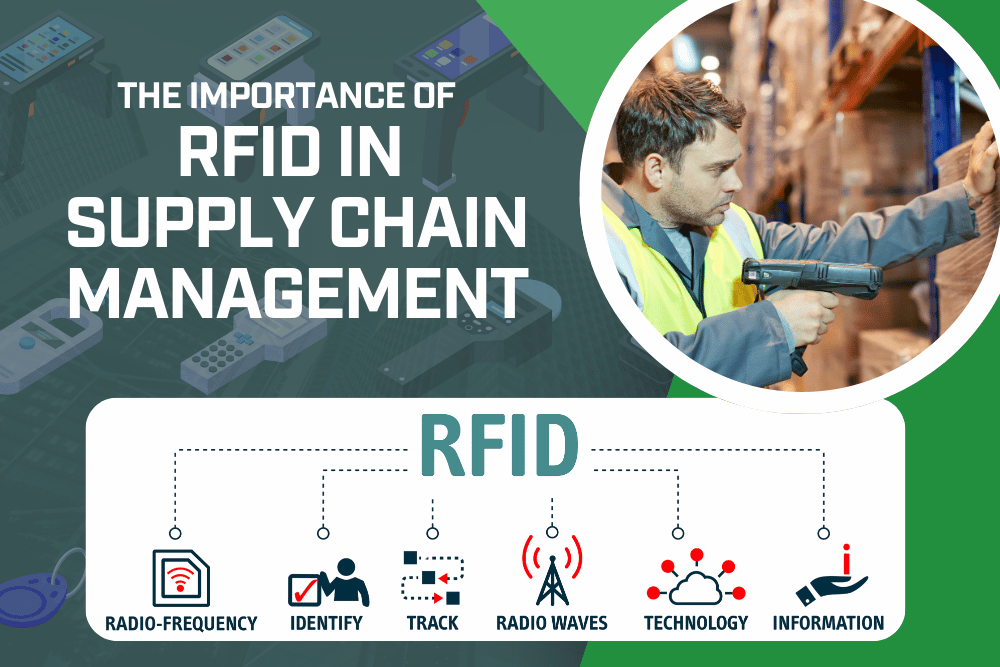Extending IT Hardware Lifecycles Amid Rising Costs
August 28, 2025
In today’s economic environment, managing the lifecycle of IT hardware has become a top priority for businesses looking to control operational costs while maintaining system reliability and performance. With rising prices for new equipment, supply chain constraints, and increasing pressure to achieve sustainability targets, extending the lifecycle of existing hardware is no longer optional, it’s essential.
IT
hardware lifecycle management matters more than ever.

Why IT Hardware Lifecycle Management Matters More Than Ever
IT hardware lifecycle management refers to the strategic approach to planning, acquiring, maintaining, and eventually retiring IT assets. With budgets tightening across nearly every sector, businesses are re-evaluating their procurement strategies and asset management practices. Rather than relying on automatic refresh cycles every 3-5 years, organizations are adopting more deliberate, data-driven approaches to determine when and how to replace or upgrade technology.
Beyond cost considerations, there are several other reasons lifecycle management is critical:
- Sustainability: Reducing e-waste and improving environmental stewardship through reuse and refurbishment.
- Risk Mitigation: Minimizing downtime and security vulnerabilities by proactively maintaining equipment.
- Compliance: Meeting industry-specific regulations regarding data handling and hardware disposal.
- Scalability: Supporting business growth without exponentially increasing IT budgets.
Understanding the full lifecycle of IT hardware helps organizations plan more effectively and make informed decisions at every stage. These phases can be grouped into three core categories.
- 1. Procurement and Deployment: This initial phase involves defining hardware requirements based on business needs and scalability goals. It includes selecting vendors, procuring equipment, and handling configuration, testing, and integration into the operational environment. Strategic planning at this stage can ensure compatibility, reduce installation delays, and set the foundation for a longer lifecycle.
- 2. Operation and Maintenance: Once deployed, hardware enters its operational phase. This includes routine monitoring, diagnostics, preventive maintenance, and firmware or software updates. Proactive maintenance not only sustains peak performance but also identifies potential issues before they lead to critical failures. Efficient repair processes and component-level upgrades can significantly extend the useful life of devices.
- 3. End-of-Life and Decommissioning: Eventually, hardware will reach the end of its viable use. However, this phase can be optimized through certified refurbishment, secure data wiping, and responsible recycling. By planning decommissioning carefully, organizations can recover residual value, reduce environmental impact, and maintain compliance with industry standards.
Each of these phases presents opportunities for cost control, operational continuity, and strategic asset utilization.
Cost Pressures and the Case for Lifecycle Extension
The cost of new IT hardware has climbed due to tariffs, inflationary pressures, and logistical disruptions. In response, organizations are delaying refresh cycles and seeking ways to stretch their existing assets. But extending hardware life isn’t simply about waiting longer to replace equipment,it’s about implementing a proactive strategy to ensure continued performance and security.
Key benefits of lifecycle extension include:
- Capital Preservation: Deferring major capital expenditures by maximizing ROI on existing equipment.
- Operational Continuity: Minimizing disruptions and ensuring consistent performance through reliable maintenance.
- Budget Flexibility: Redirecting IT funds toward innovation and digital transformation initiatives.
Proven Strategies to Extend Your IT Hardware Lifecycles
- Partner with an experienced Repair Provider: Work with a trusted provider like Mercom for depot-level repair services that restore failing or aging hardware to peak operational condition. Certified repairs ensure equipment meets industry standards for reliability, which is essential for mission-critical systems.
- Leverage Refurbished Equipment to Reduce Spend: Deploy certified refurbished devices in secondary roles or as cost-effective replacements for failed units. Refurbishment programs can dramatically reduce procurement costs while maintaining performance and compatibility.
Implement Asset Tracking and Preventive Maintenance: Use
asset management software to track performance, identify usage patterns, and schedule preventive maintenance. Routine diagnostics, component inspections, and firmware updates can prevent costly downtime and extend hardware life.
Industries That Benefit Most from Lifecycle Extension
While all sectors can benefit from smarter lifecycle strategies, some industries stand to gain the most due to the scale and complexity of their IT infrastructure:
- Retail Chains: Extend the life of POS systems, barcode and mobile devices, and kiosks across distributed locations.
- Warehousing & Logistics: Maintain rugged mobile computers, printers and barcode scanners critical to operations.
- Hospitality: Keep POS hardware in service longer.
- Healthcare: Ensure compliance and continuity by extending the life of printers and barcode equipment.
- Transportation: Manage fleet barcode equipment and vehicle mounted terminals more efficiently.

Why Mercom Is the Right Partner for Lifecycle Management
With 30+ years of experience serving enterprise clients like Walt Disney, Domino’s, and The Men’s Wearhouse, Mercom is a trusted partner in IT hardware lifecycle management. Our end-to-end service offerings include:
- Depot Repair Services: Comprehensive repair of all types of IT hardware, including barcode hardware, POS systems and rugged devices.
- Asset Management: Custom solutions for tracking, auditing, and reporting on hardware performance.
- Certified Refurbishment: High-quality reconditioning processes that meet stringent industry standards.
- Staging & Deployment: Streamlined integration of refurbished or upgraded equipment into existing environments.
We understand the pressures large organizations face and provide tailored solutions that reduce costs, enhance reliability, and support long-term growth.
Start Extending Your Hardware Lifespan Today
If rising costs and procurement delays are impacting your operations, now is the time to reevaluate your IT asset strategy. Extending hardware lifecycles doesn’t just save money, it enhances your resilience and sustainability.
If you'd like to find out more about how to extend the lifecycle of your IT hardware, or if you have specific questions about your
infrastructure, please don’t delay,
contact the team at Mercom Repair today. Let us show you how we can help you turn aging hardware into high-performance assets.




